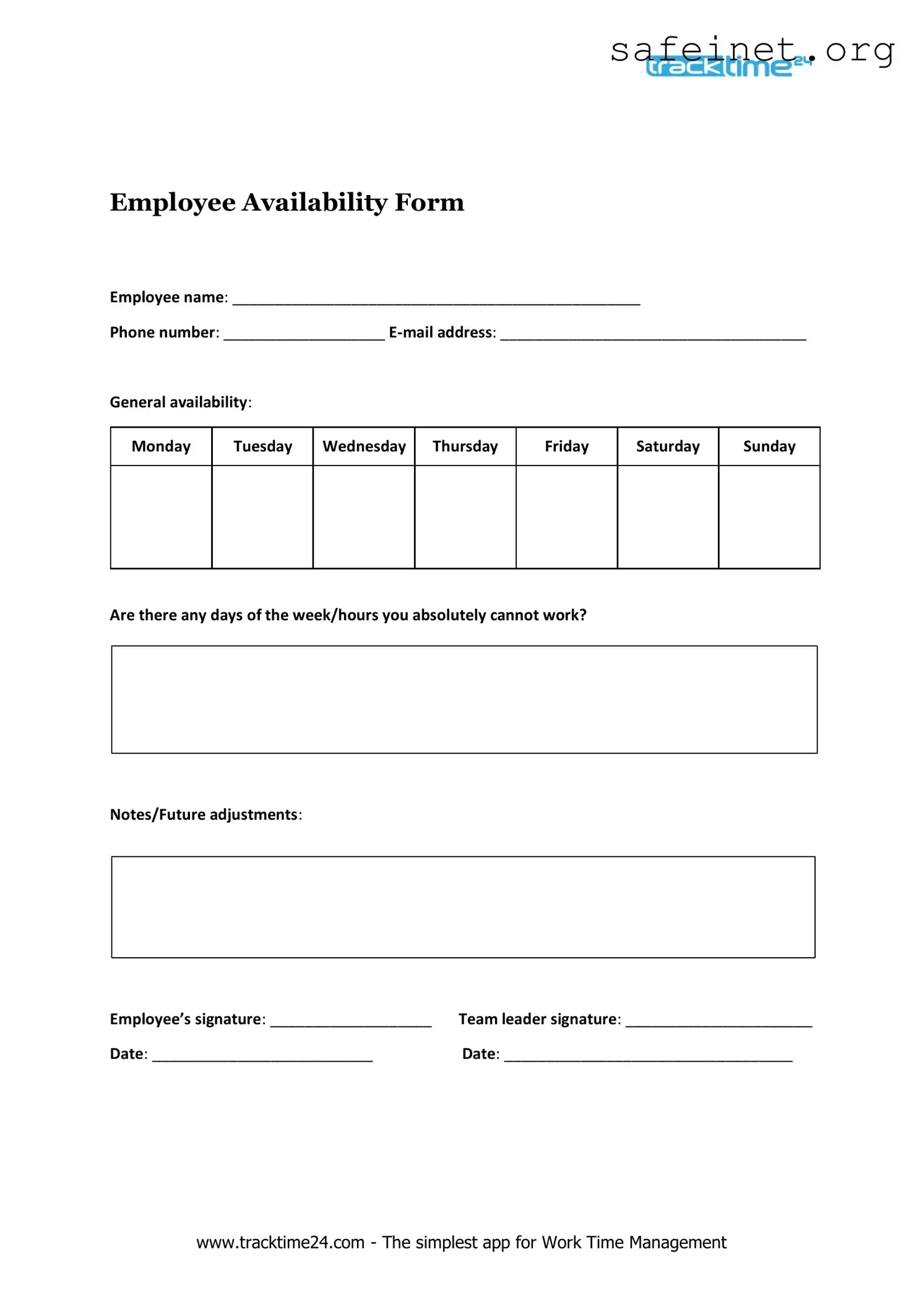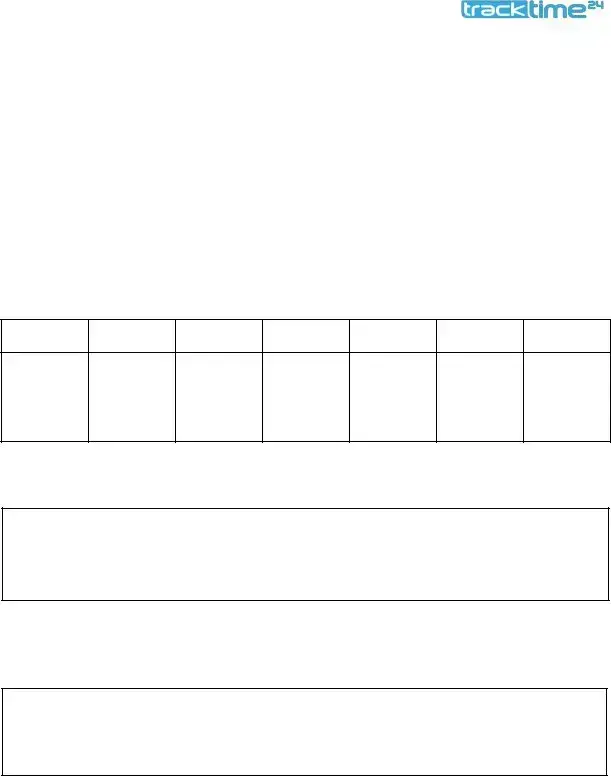The Employee Availability form closely resembles the Work Schedule Request form. Both documents are designed to facilitate clear communication between employees and management regarding work shifts. Employees use the Work Schedule Request form to indicate their preferred working hours or any conflicts they may have. This document helps employers understand employee needs and leads to better scheduling decisions.
An Employee Time-Off Request form shares similarities with the Employee Availability form as well. While the former is intended for requesting specific days off, the latter focuses on general availability. Both forms require employees to disclose their commitment to work during certain periods, ensuring that scheduling takes into account individual availability and personal commitments.
The Leave of Absence Request form is another document with comparable purposes. Workers use it to formally request time away from their duties for various reasons such as medical issues or personal matters. Similar to the Employee Availability form, it requires a clear indication of when the employee will be absent, aiding management in maintaining adequate staffing levels.
The Shift Preference form can also be considered similar. Employees fill out this document to express their preferred shifts or roles. Like the Employee Availability form, the Shift Preference form provides crucial information that helps supervisors assign shifts in a manner that respects employee preferences while balancing business needs.
The Employee Scheduling Agreement form functions in a like manner as well. This document outlines agreed-upon work hours between the employee and employer. While the Employee Scheduling Agreement may focus specifically on set schedules, the Employee Availability form allows a broader scope of availability, creating flexibility in scheduling based on employee willingness to work.
The Overtime Request form reflects another related document. Employees use this form to seek permission to work beyond their standard hours. This is akin to the Employee Availability form since both require employees to communicate their willingness to adjust their regular work schedules, which aids in planning and resource management.
When considering part-time versus full-time employment, the Work Status Notification form comes to mind. This document helps employees communicate their preferred employment status, whether they want to work full-time or part-time. Like the Employee Availability form, it emphasizes the need for open communication regarding availability and capacity to fulfill work commitments.
The Employee Rotation Schedule Request form is also relevant. This document enables employees to request changes in rotation schedules, similar to how the Employee Availability form serves as a tool for providing personal schedule preferences in advance. Both documents facilitate proper management of the workforce and help avoid potential conflicts.
Transitioning to a different role within the company can require the Internal Job Application form. Employees complete this document to express interest in positions that may have different scheduling needs. Like the Employee Availability form, it requires staff to outline their current availability, which is essential for both management and potential reassignment.
Lastly, the Remote Work Request form is similar in its purpose. Employees submit this to request a transition to remote work, detailing their availability to engage with the team from a different setting. Both forms address significant work arrangements and are vital for transparent communication that allows for effective planning by employers.

